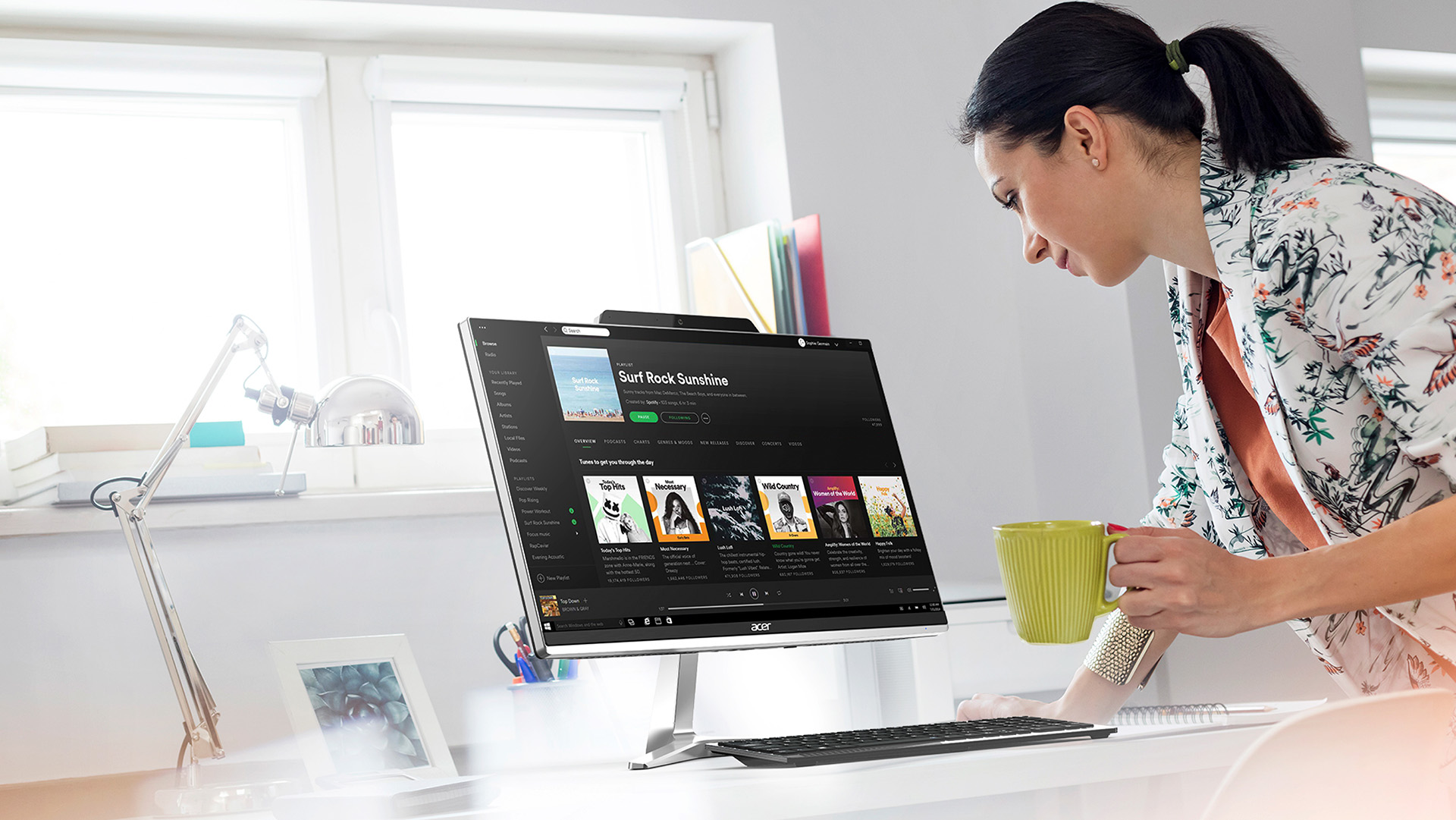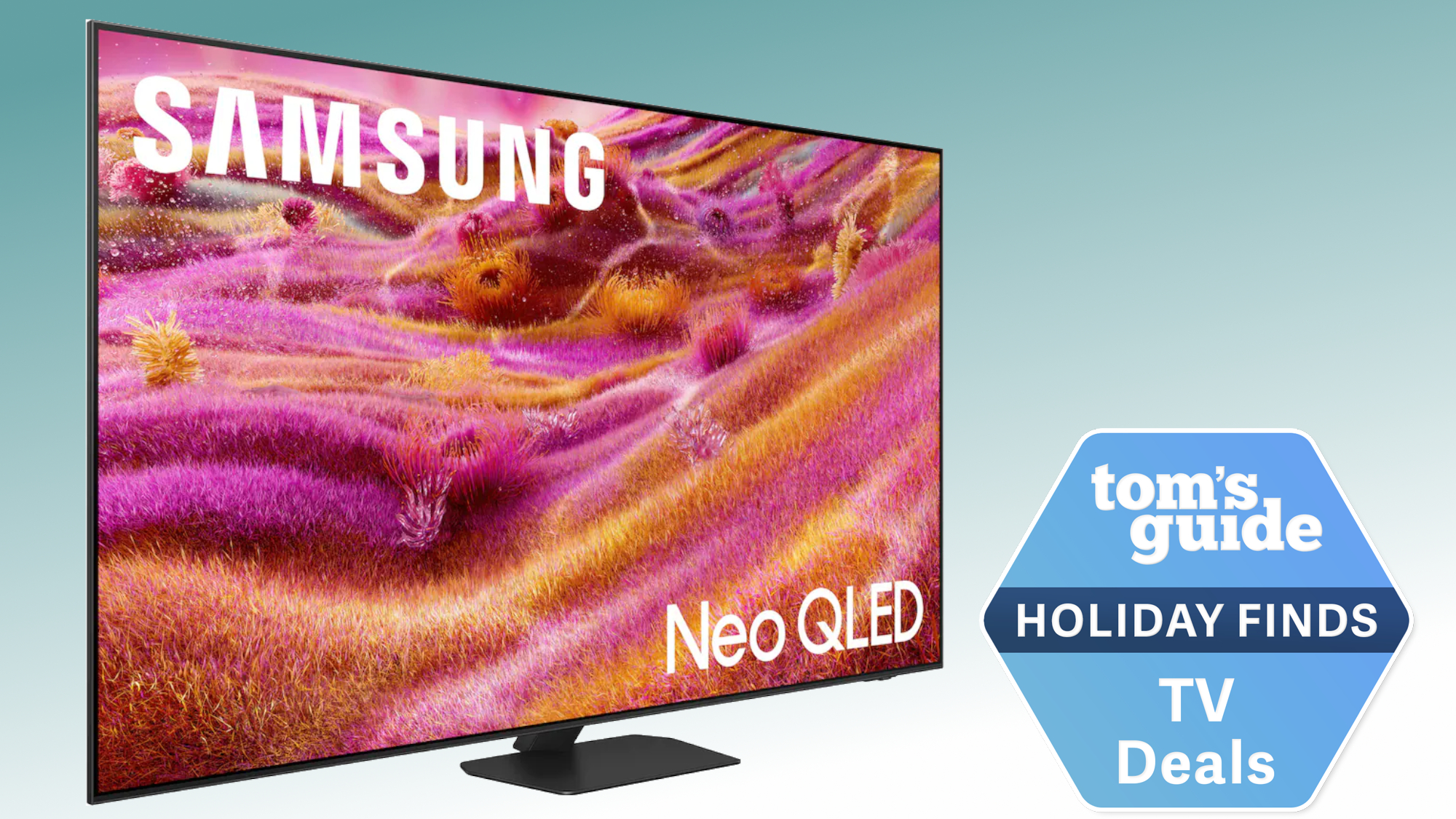Tom's Guide Verdict
The Acer Aspire Z24 packs a punch for under $1,000, delivering strong processing and decent all-around performance for the whole household, along with built-in Amazon Alexa support.
Pros
- +
Potent six-core processor provides plenty of oomph
- +
Built-in microphones for Amazon Alexa
- +
Glare-reducing touch screen
- +
Decent bundled keyboard and mouse
Cons
- -
Plastic construction
- -
Display limited to 1080p
- -
No discrete graphics option
- -
Slow hard drive
Why you can trust Tom's Guide
An all-in-one PC often needs to be all things to every member of the household, from a learning tool for kids to a photo- and video-editing machine and a desktop capable of the odd work project for Mom or Dad. The Acer Aspire Z24 hits most of these marks without costing an arm and a leg, delivering one of the best all-in-one PCs for the price, with powerful processing and overall capability for under $1,000. It may not satisfy your kid's hunger for serious gaming, but it does just about everything else, including offering helpful listening skills courtesy of Amazon Alexa.
Design
The Z24 has a relatively sleek and attractive design for an all-in-one, with a black-and-silver color scheme that looks quite nice. The Z24 measures a svelte 17.3 x 21.3 x 1.4 inches, making it about the same size as the 21-inch Apple iMac (20.8 x 17.7 x 6.9 inches) despite the Acer's larger, 24-inch display. The Acer manages this largely due to the narrow bezels around the display, as computers in Apple's iMac line sport some of the widest bezels available on an all-in-one.

The construction leaves a little to be desired, as most of the silver-colored trim is plastic rather than the aluminum you might find on something like an iMac. This faux-metal look extends to the whole machine: the trim, stand and base are all made of silver plastic, and the back of the all-in-one is black. The only external metal piece appears to be built in to the stand's mounting bracket.
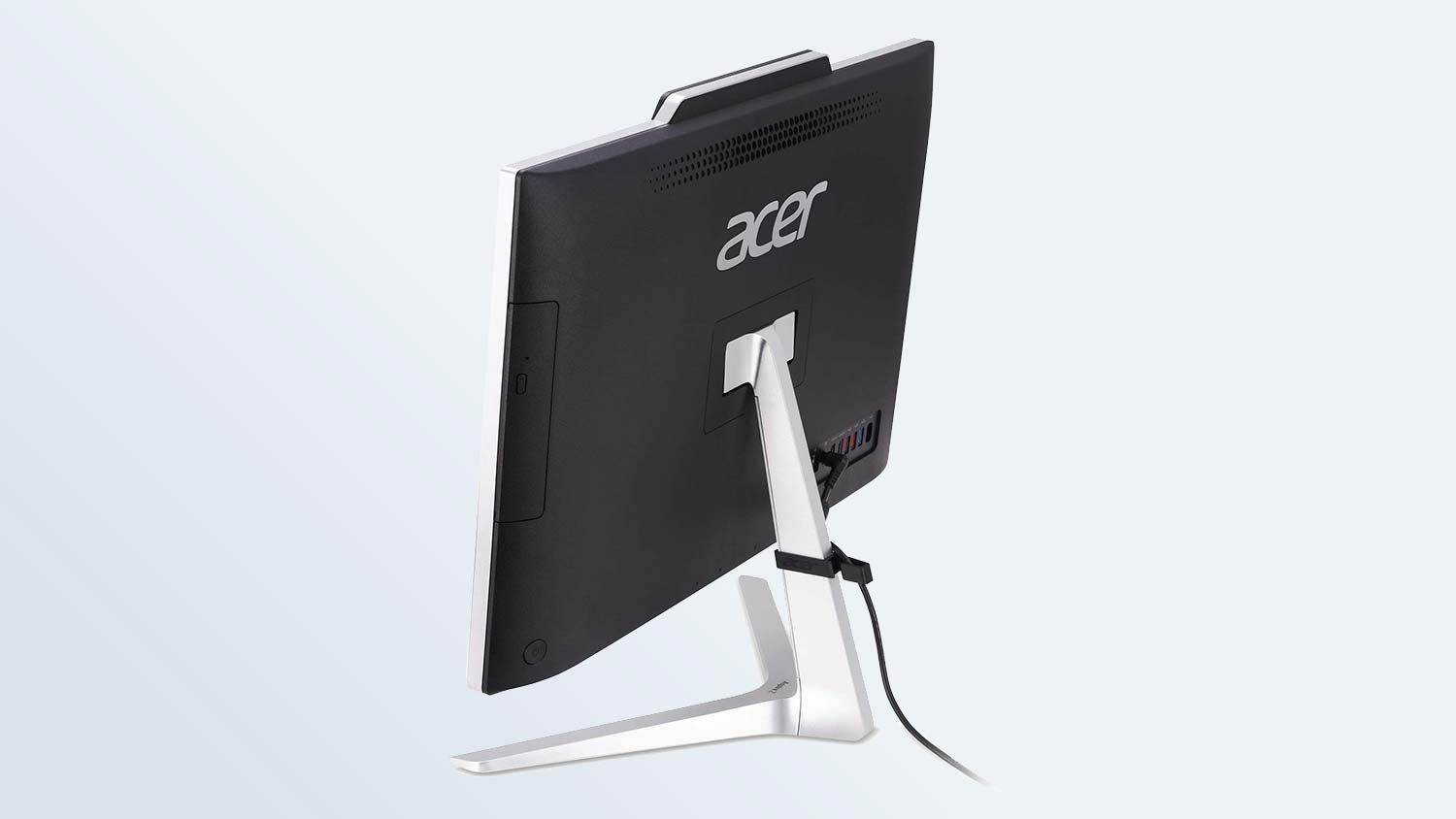
The Aspire all-in-one has an attached stand with a Y-shaped base. The stand attaches in back and offers a decent range of vertical-angle adjustment, but horizontal adjustment requires moving the entire unit, and there is no way to adjust the height, short of stacking the PC on something else, like a stack of books. This is not an uncommon issue for all-in-one systems, and even expensive workstations may find themselves perched on a stack of stuff, but we'd still like to see more height options, if only to improve the ergonomics of the machine.
Around the right-hand side of the display is a tray-loading DVD drive. Once a fairly common feature on any PC, this is now something of an oddity, a technological holdout. But it may nonetheless prove useful to anyone who still has an extensive CD collection or uses DVDs for long-term storage of documents and media.
Display
The Aspire Z24 boasts a 24-inch display with full-HD (1920 x 1080) resolution. The display has a matte finish that cuts down on glare from nearby lights and windows, and the screen offers capacitive touch support, so you can tap and swipe for intuitive interaction. This is one area where Windows systems are clearly superior to Macs, which have no touch option.
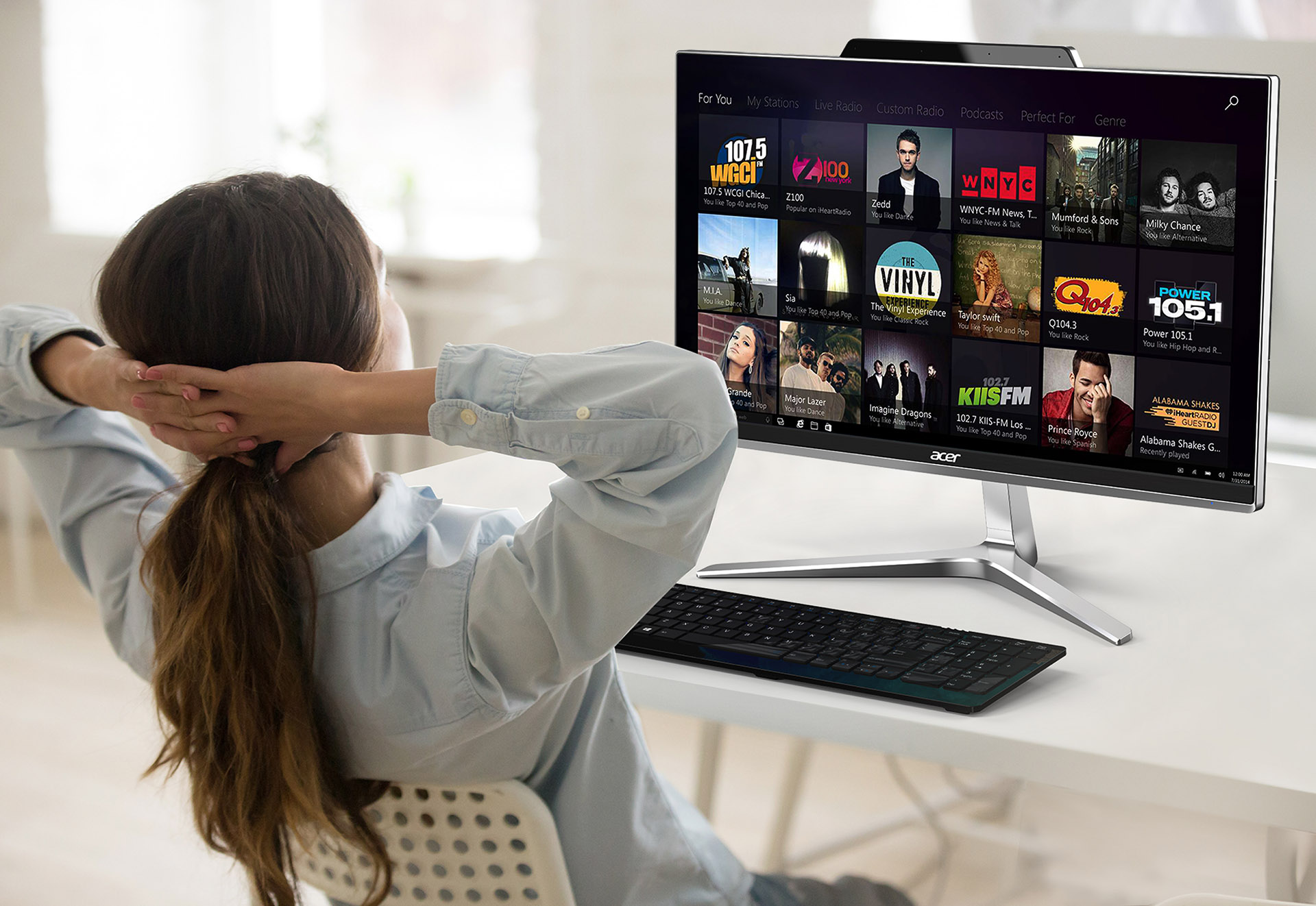
Watching the trailer for Top Gun: Maverick, I was able to make out every detail of the 1080p picture, whether it was showing fast-moving fighter jets, Tom Cruise's barely-aged face or the reflections on a shiny pair of aviator sunglasses. Blue skies looked realistic and vivid, and shots of aircraft carriers in the ocean looked crisp and detailed. Really, my only complaint is that there's no option for a 4K display, like those seen on the Asus Zen AiO Pro Z240IE and Apple iMac 21.5-inch model (2019).
Get instant access to breaking news, the hottest reviews, great deals and helpful tips.
The Aspire Z24 tested well on specific aspects of the display. Brightness, as measured with our Klein K10-A colorimeter, averaged 249.4 nits, edging ahead of the Asus Zen AiO Pro Z240IE (247 nits) and the Acer Aspire S 24 (236.6 nits), but falling behind the more-premium displays seen on the Dell XPS 27 7760 (344 nits ) and 21.5-inch Apple iMac (436 nits).
MORE: Best All-in-One PCs of 2019
Color quality wasn't as impressive, with the Acer producing just 95.1% of the sRGB color spectrum. That's a far cry from the competition's results, which were all better than 100%, with fuller, visibly more-vibrant color as a result.
The Acer's color accuracy was also slightly off, with a Delta-E rating of 1.32 (a perfect score is 0), compared with the slightly better ratings seen on the Asus Zen AiO Pro Z240IE (0.28) and the 21.5-inch Apple iMac (0.1). That said, the differences between any scores less than 3.0 is hard to spot for most people. Additionally, you can use the included Acer Color Intelligence utility to optimize the color calibration to suit your tastes.
Watching the trailer for Top Gun: Maverick, I was able to make out every detail of the 1080p picture, whether it was showing fast-moving fighter jets, Tom Cruise's barely-aged face or the reflections on a shiny pair of aviator sunglasses.
To give your eyes a bit of a break while staring at the screen, Acer has built in some technologies to keep eyestrain at bay. Bluelight Shield adjusts the colors to appear as they should, while reducing the amount of blue light emitted by the screen, reducing the wavelengths that can damage eyes over time. Another eye-friendly technology is flicker reduction, which makes for more-comfortable viewing.
Audio
Audio quality came through clearly from the Z24's downward-firing internal speakers. Listening to the Top Gun: Maverick trailer, I was able to clearly hear every bit of dialogue from Ed Harris, even when roaring fighter jets threatened to drown him out. Volume levels are good, producing enough noise to be heard in the next room and with sufficient clarity that you can distinguish among dialog, sound effects and the movie soundtrack. However, the sound from the speakers feels a bit lackluster, with shallow bass.
Keyboard and Mouse
This all-in-one comes with a wireless keyboard and mouse, both of which are connected through a small wireless dongle. The low-profile dongle uses the USB 2.0 port on the bottom edge of the display chassis, and it's inconspicuous once plugged in. Chances are very high that you will plug it in and, in short order, forget the dongle is even there.
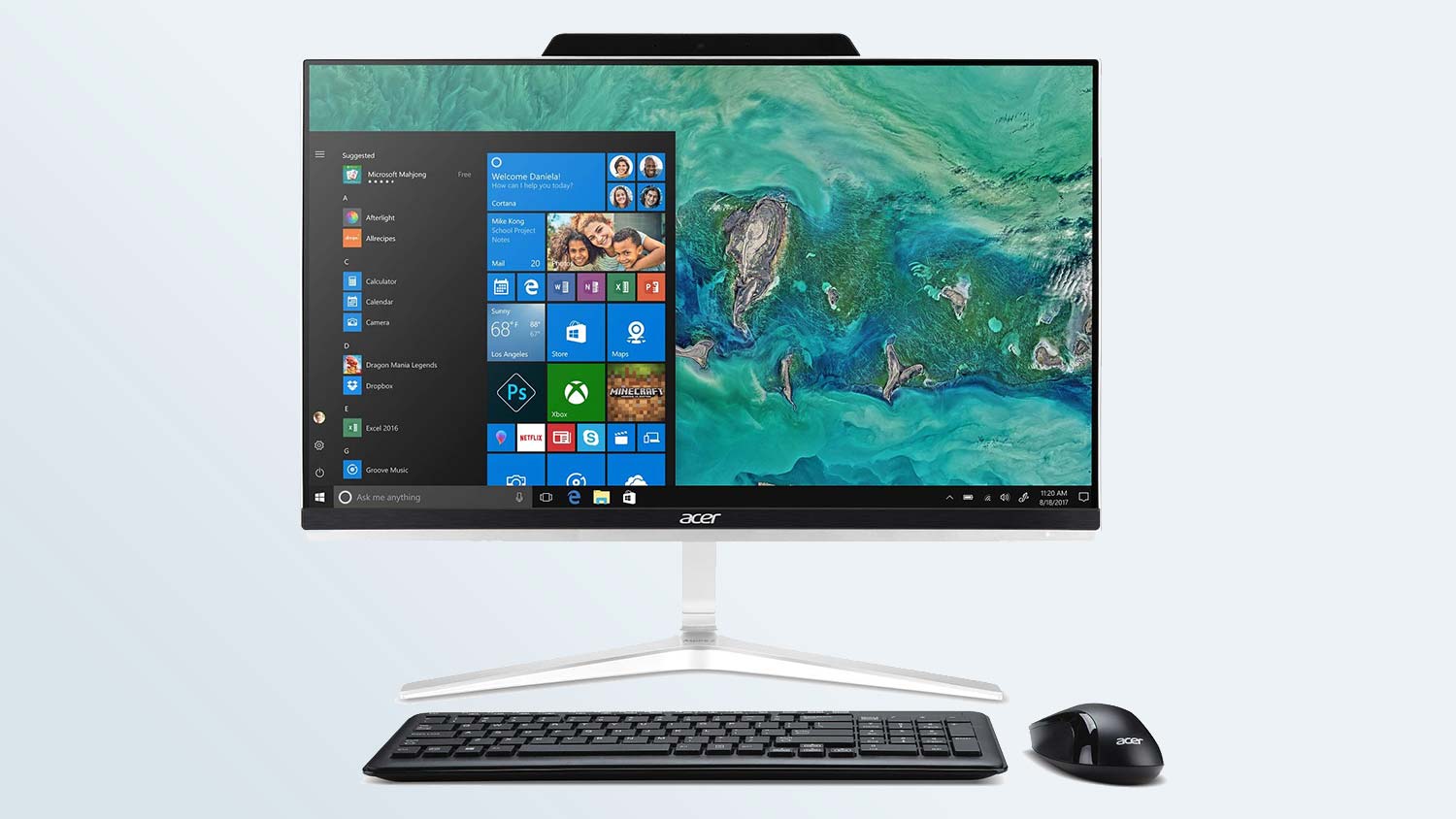
The included wireless keyboard is reasonably comfortable to type on, with chiclet keys and adjustable feet that let you shift between two heights and angles. The full-size keyboard offers a numeric pad and a full complement of function buttons, but it would have been nice if the keys had offered a tad more vertical travel.
The included mouse is easy to set up and runs off of a single AA battery. While I've come to expect lightweight, uncomfortable mice with most all-in-one systems, this mouse has a decent amount of heft. The layout is basic, with right and left buttons and a rubber scroll wheel, but it's relatively comfortable in hand.
Ports
The Z24 is outfitted with a trio of USB 3 ports (one blue USB 3.1 Gen 1 port and two red USB 3.1 Gen 2 ports), along with a single USB-C port. There are two HDMI connectors, one output for connecting a second display, the other, an input, for using the all-in-one as a monitor.
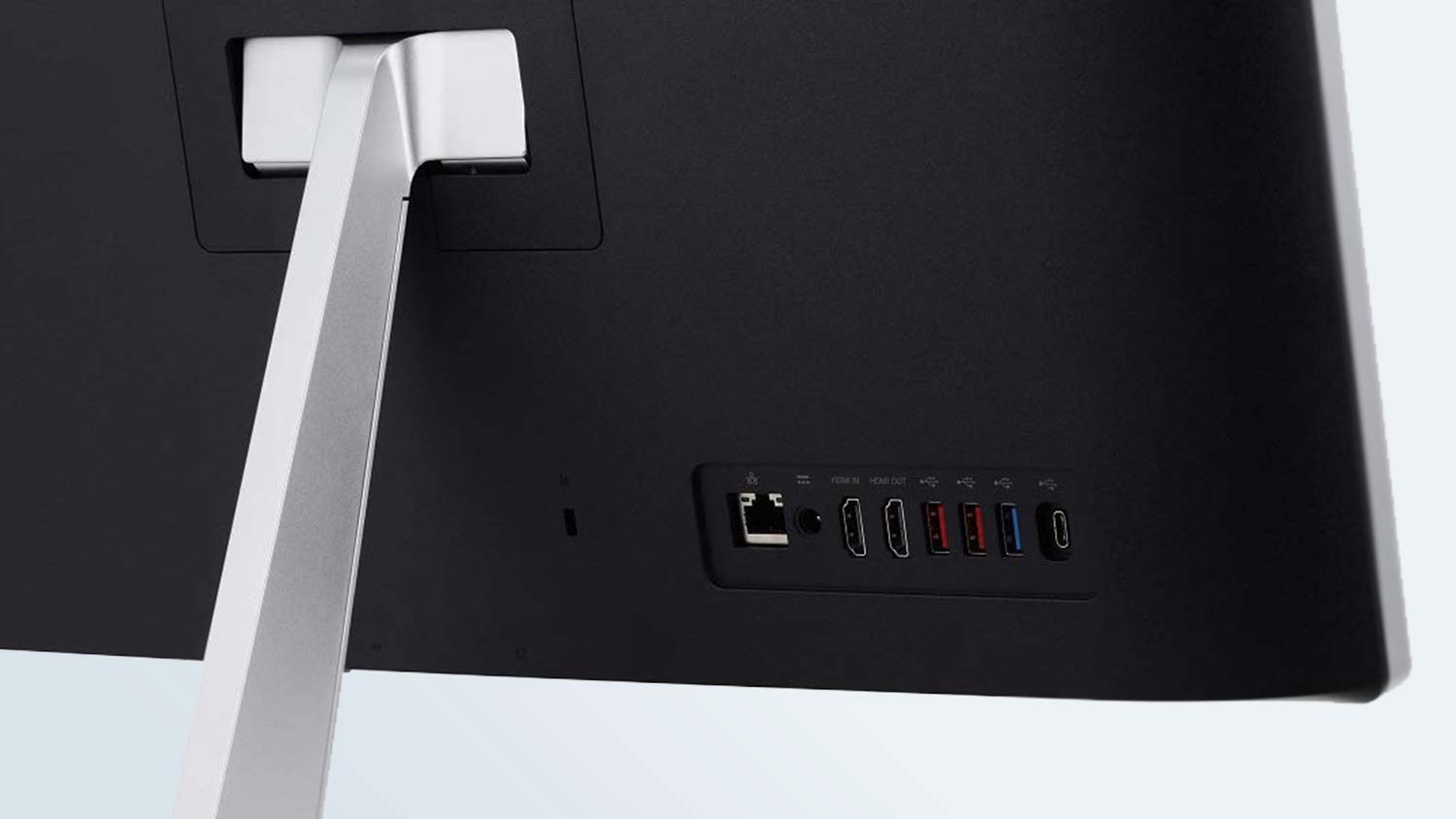
A few connections are tucked onto the bottom edge of the chassis, below the display. There's an SD card slot, a 3.5mm headphone jack and a USB 2.0 port, which is meant to be used with the wireless dongle for the included keyboard and mouse.
For networking, the Z24 has both a wired LAN port and 802.11ac Wi-Fi built in, along with Bluetooth for connecting wireless headphones, keyboards and other devices.
Performance
The model of Aspire Z24 we tested (the Z24-890-UR12) comes equipped with an Intel Core i7-8700T hexa-core processor, clocked at 2.4 GHz, along with 8GB of RAM and a 2TB hard drive, boosted with 16GB of Intel Optane memory. It's a capable combination, and during my use of the machine, I would regularly have 20 browser tabs open, as I did everything from type in Google Docs to stream full-HD video on YouTube, all without any noticeable slowing.
In our Geekbench 4 performance test, the Z24 scored 14,427 points, putting it ahead of the Acer Aspire S 24 (10,401 with an Intel Core i5-8250U processor, 12GB of RAM) and the Asus Zen AiO Pro Z240IE (11,817 with an Intel Core i7-7700T processor, 16GB of RAM). But the Z24 was beaten out by the pricier Dell XPS 27 7760 (15,749; Intel Core i7-7700, 16GB of memory), and everything fell short of the 21.5-inch Apple iMac (20,978), even though it has a six-core Intel Core i5-8500 processor and 8GB of RAM.
File-transfer speeds were on the slow side, thanks to the system's spacious but lethargic 5,400-rpm hard drive. While that does get a slight speed bump from the use of Intel Optane memory, the overall speeds can keep up with the pure solid-state drives found in competing systems. The Z24 copied over our 4.97GB test file in 2 minutes, 34 seconds. Compared to systems like the Asus Zen AiO Pro Z240IE (50 seconds) and the Acer Aspire S 24 (74 seconds), it's noticeably slow. More-premium systems, like the Dell XPS 27 7760 (4.21 seconds), were much faster, thanks to their NVMe M.2 SSDs.
During my use of the machine, I would regularly have 20 browser tabs open, as I did everything from type in Google Docs to stream full-HD video on YouTube, all without any noticeable slowing.
Finally, there's raw processing power, as measured in our spreadsheet macro tests, which pair tens of thousands of names and addresses in a giant spreadsheet. Using the older, single-thread Open Office version of this test, the Z24 took 3 minutes and 12 seconds to crank through the data, putting this machine ahead of the Asus Zen Z240IE and Acer Aspire S 24 (both 3:40).
However, when we switched to the newer, multithread version of the test in Excel, the Z24 completed finished in 3 seconds. The Apple iMac took 46 seconds to perform the same work, making the Aspire Z24 one of the fastest sub-$1,000 desktops we've seen. Given the six cores of the Core i7-8700T processor under the hood, that's not really a huge surprise.
What is a surprise, however, is the lack of commensurate graphics hardware. With only integrated Intel UHD Graphics 630 for visual rendering, the relatively powerful Z24 isn't so hot on the gaming front.
MORE: Best Gaming Desktops 2019
In 3DMark Ice Storm Unlimited, this machine scored a decent 90,574 points. Compared with the similarly equipped Acer Aspire S 24 from last year (61,061 points, Intel UHD 620) that's an improvement, but the Z24 falls far short of any desktop equipped with a discrete graphics card.
In the more demanding 3DMark Fire Strike test, the Z24 scored 1,090 points. The Asus Zen AiO Pro Z240IE achieved roughly five times that (5,383 points), thanks to an Nvidia GeForce GTX 1050, while the Dell XPS 27 7760 jumped ahead to 9,393 points using an AMD Radeon RX 570 graphics card.
Testing with an actual game, the basic Dirt 3, showed low frame rates (27.3 frames per second), falling below the 30-fps threshold for gaming use. That's about on the same almost-playable level as the Acer Aspire S 24 (29.11 fps), but the AMD-equipped Apple iMac managed 122 fps, and the Nvidia-based Dell XPS 27 7760 delivered 208 fps under similar settings. Sure, you can enjoy solitaire and Candy Crush, but more-intensive games are out.
Webcam and Far-Field Microphones
Positioned directly above the screen is an integrated webcam. The Z24 camera has full-HD resolution, but the picture quality is good, not great. While it did adequately capture the primary details of my face, fine detail was a little less clear. Individual hairs and whiskers blurred together, and colors came across muted. This is not uncommon for an all-in-one, or for any built-in webcam, as manufacturers rarely offer better than basic webcam capability.
Alongside the webcam, however, are four built-in microphones that have far-field listening capability, meaning that in addition to picking up your voice for video chat and other close-range use, the microphones will be able to listen to the greater room around them for use with Microsoft Cortana and Amazon Alexa voice assistants. Though not enabled by default, these microphones can be set so you can simply speak into the room and the associated voice assistant will listen.
Testing the far-field microphones with both Cortana and Alexa yielded fairly good results. Whether I was sitting in front of the computer or on the other side of the room, the quartet of microphones seemed to pick up my voice clearly and understand what I was saying. The voice assistants were able to do their job well, whether I was searching for a specific file or hunting for the new Top Gun trailer on YouTube. It's a particularly nice bit of functionality for those who want to use Amazon Alexa but haven't felt the need to purchase an Amazon Echo or similar device.
Software and Warranty
The Z24 comes with a handful of included software, ranging from the expected Microsoft add-ons, such as trial versions of Office, the Microsoft Edge browser, Skype and Paint 3D. There are also a few Acer-specific programs, such as Acer JumpStart, which launches some utilities when the machine is booting; Acer Collection S, which makes app suggestions; and an Acer product-registration app.
Among the other included programs are Cyberlink PhotoDirector and PowerDirector, for photo and video editing, respectively; the Firefox web browser; Norton security; and Amazon Alexa. None of these are vital, and all are safe to remove.
Acer covers the Aspire Z24 with 24/7 online tech support and a standard one-year warranty.
Configurations
Our review unit of the Z24-890-UR12 came equipped with an impressive six-core Intel Core i7-8700T processor, 8GB of RAM, 16GB of Intel Optane memory and a 2TB hard drive. As of this writing, that unit sells for $949.
But other configurations are more affordable, if more modest. The midrange configuration (Z24-890-UR11) has an Intel Core i5-8400T processor and halves the storage space, with a 1TB hard drive, which drops the price to $819. This model still has 8GB of RAM and 16GB of Optane storage, but you can expect slightly less impressive performance than what we saw in our testing.
The most affordable configuration has a newer i5-9400T processor with 12GB of RAM, which that machine pairs with a 512GB solid-state drive. This reduces the storage space but should provide a noticeable performance boost. This model (the Z24-890-UA91) sells for $699.
Bottom Line
The Acer Aspire Z24 offers a fairly robust desktop experience for under $1,000. The Intel Core i7 hexacore processor inside this machine rivals all but the most powerful systems we've seen, and it's paired with plenty of storage and high-performance memory. The lack of a graphics card does hamper things a bit, especially if you had hopes of gaming. But for a household system that might be used for anything from completing simple school papers to editing home movies, the Aspire Z24 provides strong performance under most circumstances.
Combine this with the affordable price and stylish design, and the Acer Aspire Z24 replaces the older Acer Aspire S 24 as our favorite value all-in-one. While I might recommend spending a bit more for gaming-ready graphics support or a 4K display, you won't find a better all-in-one system for under $1,000.
- Save money on your next Acer purchase with our handpicked Acer promo codes.
Brian Westover is currently Lead Analyst, PCs and Hardware at PCMag. Until recently, however, he was Senior Editor at Tom's Guide, where he led the site's TV coverage for several years, reviewing scores of sets and writing about everything from 8K to HDR to HDMI 2.1. He also put his computing knowledge to good use by reviewing many PCs and Mac devices, and also led our router and home networking coverage. Prior to joining Tom's Guide, he wrote for TopTenReviews and PCMag.
